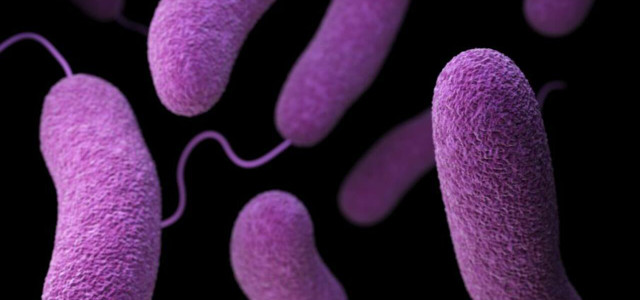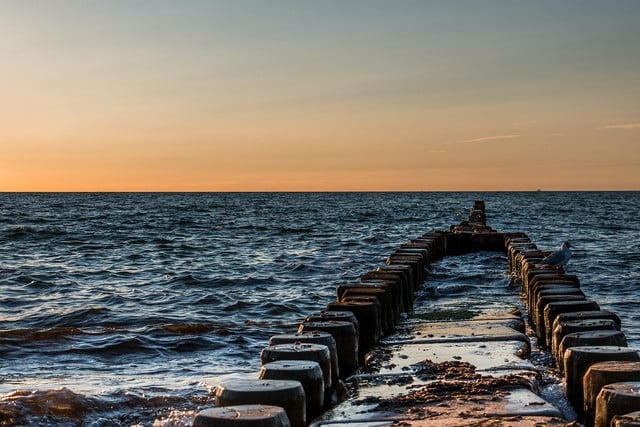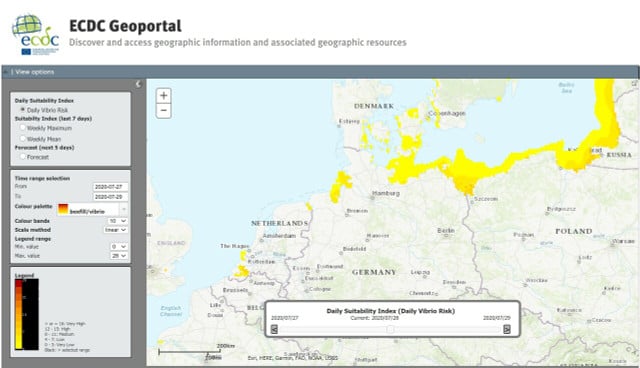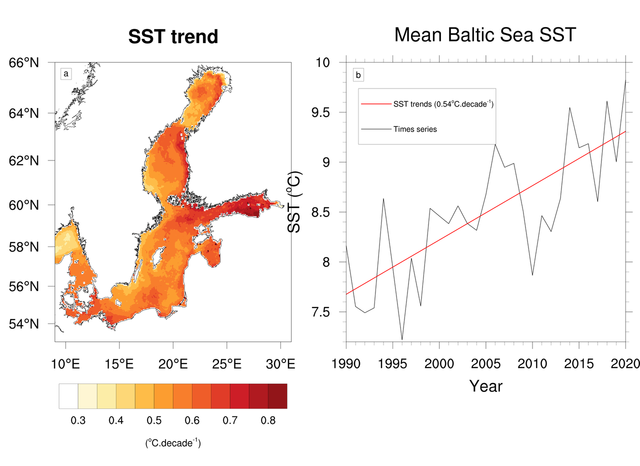
Vibrios can be found in the North Sea and Baltic Sea, but also in inland waters. The bacteria cause acute infections. Climate change promotes their proliferation.
Vibrios are bacteria. They can be roughly divided into non-cholera vibrios and vibrios that can cause cholera infection. Since the latter do not exist in Germany, we will not go into this type of bacteria any further here.
Non-cholera vibrios are also found in German bathing waters, especially in the Baltic Sea. They cause gastrointestinal, wound or ear infections.
Under what conditions do vibrios occur?

(Photo: CC0 / Pixabay / DieKiecki)
As the Robert Koch Institute (RKI) describes, the bacteria are found in fresh and salt water. The Baltic Sea has optimal conditions: Vibrios thrive at a salt content of between 0.5 and 2.5 percent and a water temperature of over 20°C. This is why shallow areas or areas near the coast are particularly susceptible to vibrios. The water warms up more quickly there than in deeper areas.
Places where freshwater flows into the sea are also more likely to contain the bacteria because the salt content in the water is lower there.
If the risk of vibrios in the water on the Baltic coast in Mecklenburg-Western Pomerania is increased, the State Office for Health and Social Affairs (LAGUS) issues official bathing warnings. The official bathing water map of the MV state government can also give you information about the situation.
What can happen if I come into contact with vibrios?
Open or unhealed wounds are particularly susceptible to infection with vibrios. If they come into contact with bath water containing vibrios, they can become infected. This causes pain that seems disproportionately severe for the type of wound. Fever, stomach pain or chills can also occur.
But “There is no reason to panic,” says Matthias Gründling, intensive care physician and head of the Sepsis Dialogue at Greifswald University Medical Center. “In principle, it is completely harmless. The probability of becoming infected is very low.”
According to the Robert Koch Institute (RKI), between 2002 and 2019, zero to 20 cases of infection were reported annually on German coasts. These occurred primarily in warmer summers. The affected patients were almost without exception older and had pre-existing medical conditions.
Since the first symptoms appear relatively soon after infection – usually between four hours and four days – patients can often be treated at the place where they became infected. This is particularly convenient for vacationers who do not live near a body of water susceptible to vibrios. At home, vibrios infection is often not even suspected.
Can I avoid a vibrio infection?
“You can’t protect yourself when you’re swimming,” says Gründling. He therefore advises: “If I have an open wound and the water temperature is over 20 degrees, then it’s really not advisable to go swimming with it.” Because at this water temperature and with a moderate salt content, the bacteria with the medical name Vibrio vulnificus multiply more rapidly.
How can wound infections be treated?
If a wound infection caused by vibrios is diagnosed or suspected, it is important to act quickly. If it is detected early enough, the infection can be treated with antibiotics. Without timely treatment, the infection can spread further. A severe, untreated course of a wound infection caused by vibrios can lead to blood poisoning, amputations or even multiple organ failure resulting in death.
However, severe cases are very rare. Infections are usually mild, especially in young and healthy adults. Older and/or immunocompromised people or people with pre-existing conditions such as cancer or diabetes are more susceptible.
Can I also become infected with vibrios through food?
There is another way to become infected with vibrios: if you eat raw fish or seafood from water that contains pathogens, you may develop gastrointestinal inflammation. In Germany, however, this is rather rare and usually only occurs in connection with imported fish.
Children are also diagnosed with ear infections that they contract when bathing in water containing vibrions.
Where do vibrios occur in Germany?

(Photo: Screenshot / ECDC)
In Germany, there are only a few cases related to vibrios: even in warmer summers, no more than 20 cases were reported between 2002 and 2019, according to the RKI. However, the RKI assumes that there were more infections that were either not reported or not diagnosed at all.
Since 2020, there has been a reporting requirement for vibrio infections. This allows health authorities to detect increased occurrence of the bacteria and inform risk groups if necessary. There is no test to find out whether vibrios are present in bathing water. However, their presence is unlikely if the salt content of the water is below 0.5 or above 2.5 percent or if the water is colder than 20° C.
The website of the European Centre for Disease Prevention and Control has an interactive map where you can see when and where Vibrio infections have occurred in Europe. You should be careful at the marked bathing areas, especially if you have open wounds.
What can I do if I suspect a vibrio infection?
If you suspect a vibrio infection, speak to medical personnel as soon as possible and, if necessary, get an antibiotic prescribed. This will prevent the wound from becoming further infected and requiring surgical intervention.
What effects does climate change have on vibrios?

(Photo: Graphics: IOW / C. Dutheil)
The fact that vibrios occur in water is not unusual in itself: they live there, just like other living creatures. However, the Federal Institute for Risk Assessment (BfR) expects a worldwide increase in vibrios. The reason for this: climate change. The oceans are warming and the bacteria are multiplying as a result.
The BfR also fears an increase in gastrointestinal infections caused by vibrios. Due to the international trade in fish, more people worldwide could come into contact with imported fish and other marine animals that come from waters containing vibrios. Therefore, make sure to buy regional organic products if you want to eat fish. The products from Naturland and fish from aquaculture from Bioland are subject to the strictest requirements.
The WWF fish guide helps you keep track.
Professor Markus Meier, the leading expert on climate and climate change in the Baltic Sea region, explains the rise in ocean temperatures as follows: “The marginal seas are warming much more rapidly than the deep oceans. The Baltic Sea is one of the frontrunners among them: no other marginal sea in the world for which there is observational data has warmed so quickly in recent decades. By the year 2100, the Baltic Sea surface water is expected to warm by one to three degrees Celsius.”
An evaluation by Dr. Cyril Dutheil at the Leibniz Institute for Baltic Sea Research Warnemünde (IOW) from 2022 even found a temperature increase of 1.6 degrees Celsius in the surface water of the Baltic Sea over the past three decades. The graphic visualizes the measured temperature increase (SST = Sea Surface Temperature).
With material from dpa
Read more on Techzle\.com:
- Accelerate wound healing: How to heal your wounds faster
- How climate change threatens our health
- Cercariae: What you need to know about the parasites in bathing lakes
** marked with ** or orange underlined Links to sources are sometimes affiliate links: If you buy here, you are actively supporting Techzle\.com, because we then receive a small part of the sales proceeds. More information.